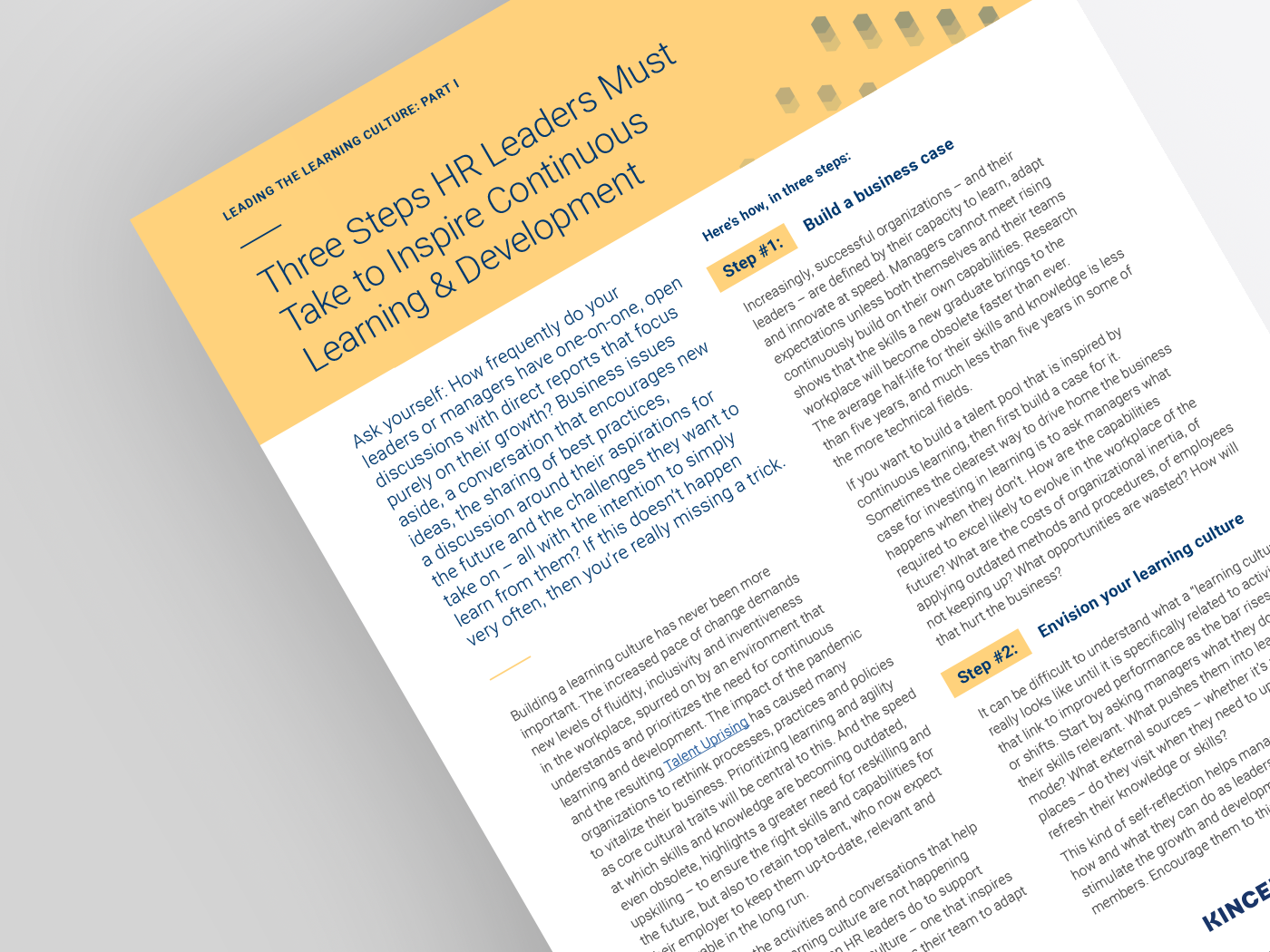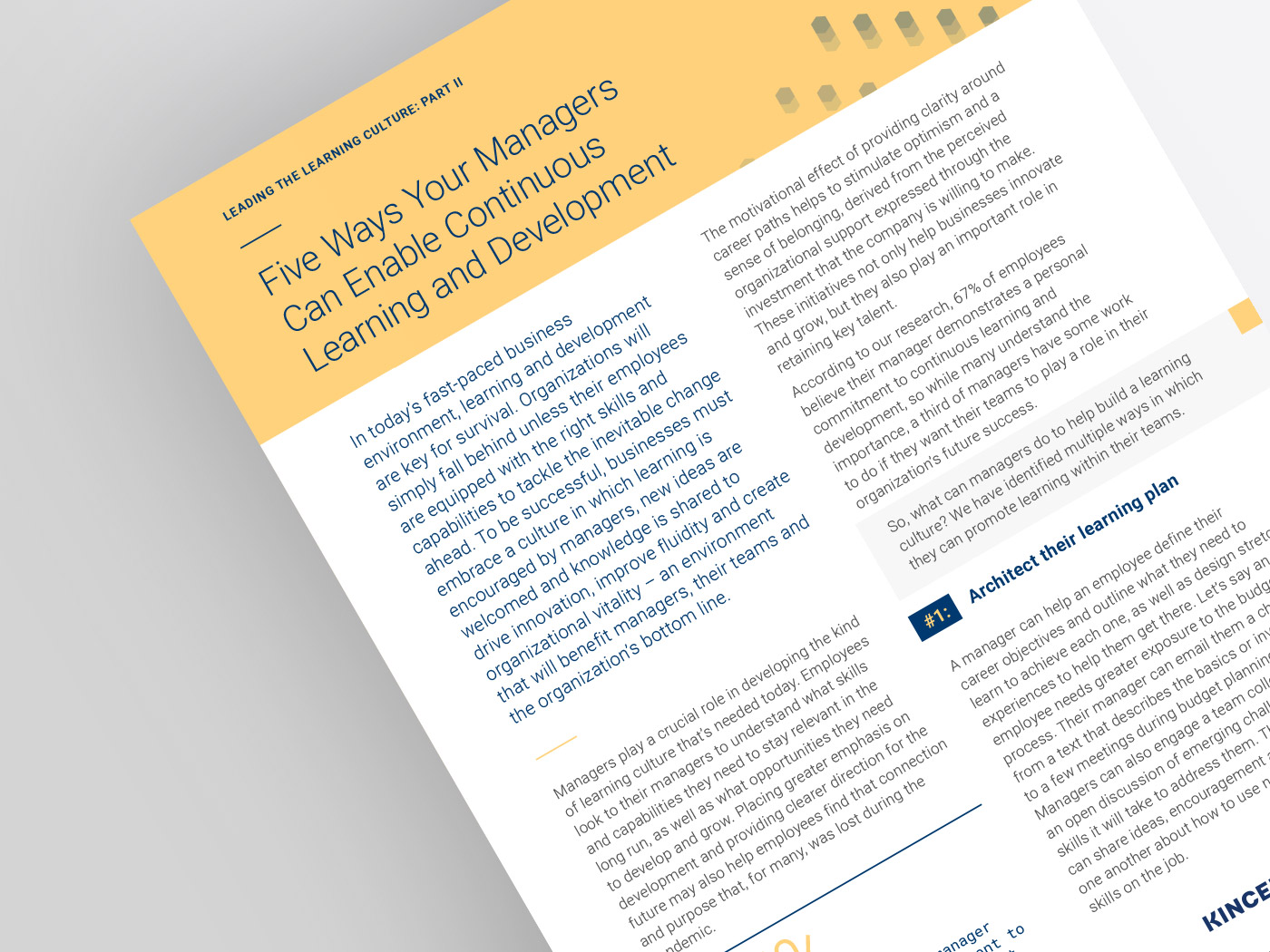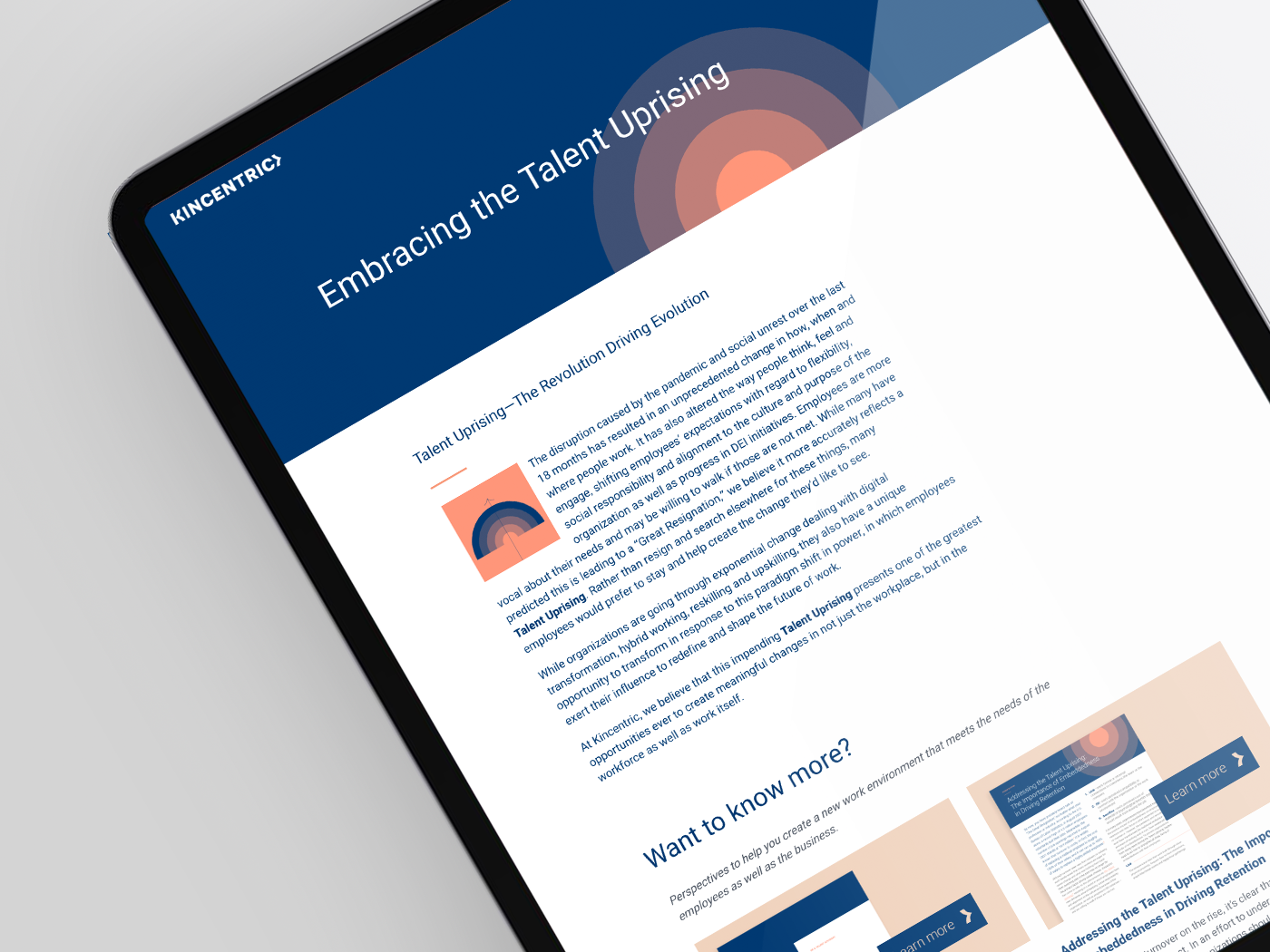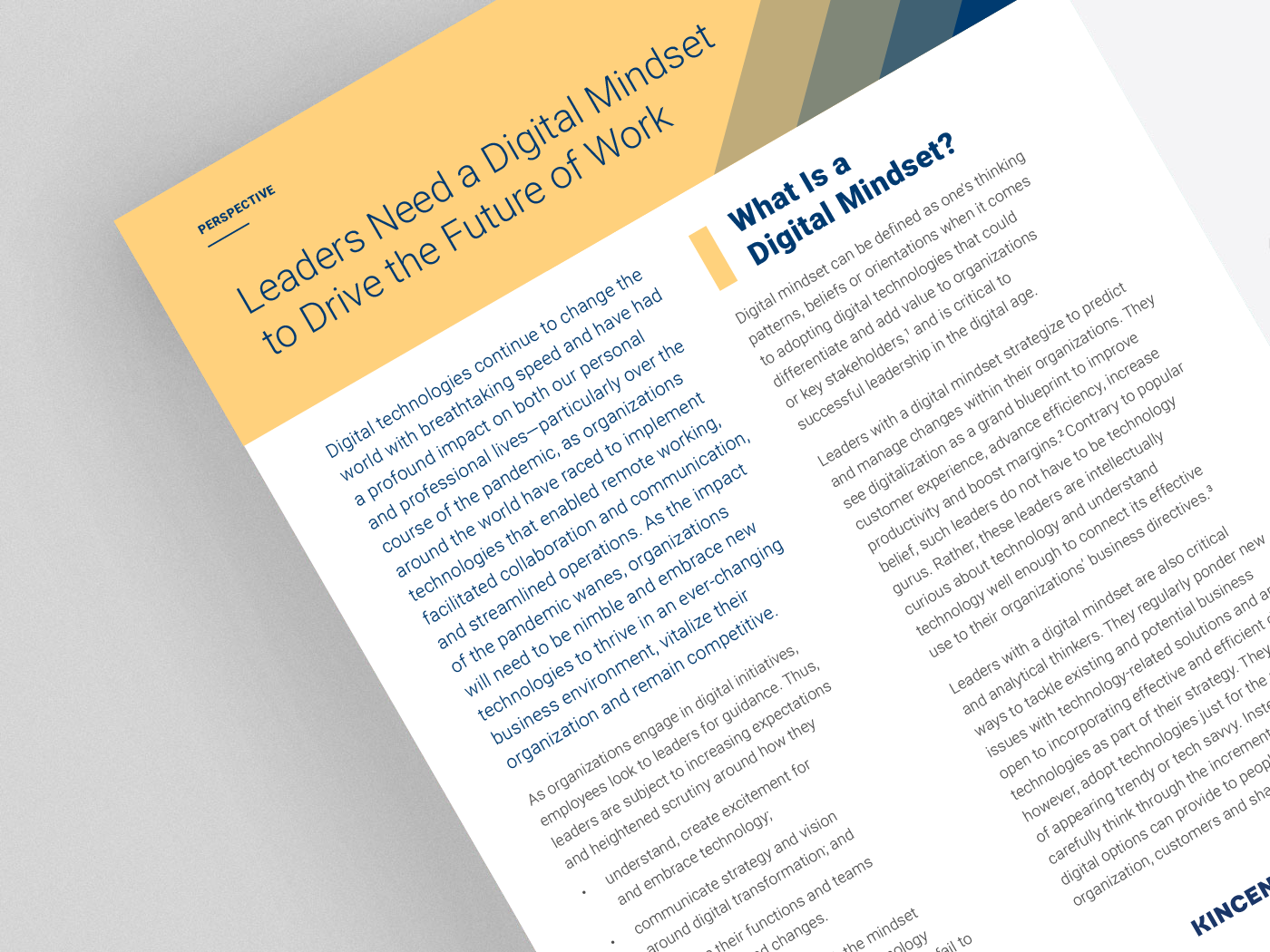
Ask yourself: How frequently do your leaders or managers have one-on-one, open discussions with direct reports that focus purely on their growth? Business issues aside, a conversation that encourages new ideas, the sharing of best practices, a discussion around their aspirations for the future and the challenges they want to take on – all with the intention to simply learn from them? If this doesn’t happen very often, then you’re really missing a trick.
Building a learning culture has never been more important. The increased pace of change demands new levels of fluidity, inclusivity and inventiveness in the workplace, spurred on by an environment that understands and prioritizes the need for continuous learning and development. The impact of the pandemic and the resulting Talent Uprising has caused many organizations to rethink processes, practices and policies to vitalize their business. Prioritizing learning and agility as core cultural traits will be central to this. And the speed at which skills and knowledge are becoming outdated, even obsolete, highlights a greater need for reskilling and upskilling – to ensure the right skills and capabilities for the future, but also to retain top talent, who now expect their employer to keep them up-to-date, relevant and employable in the long run.
Unfortunately, the activities and conversations that help to aid this type of learning culture are not happening often enough. So, what can HR leaders do to support the development of a learning culture – one that inspires continuous development that enables their team to adapt to the inevitable changes ahead?
Here’s how, in three steps:
Increasingly, successful organizations – and their leaders – are defined by their capacity to learn, adapt and innovate at speed. Managers cannot meet rising expectations unless both themselves and their teams continuously build on their own capabilities. Research shows that the skills a new graduate brings to the workplace will become obsolete faster than ever. The average half-life for their skills and knowledge is less than five years, and much less than five years in some of the more technical fields.
If you want to build a talent pool that is inspired by continuous learning, then first build a case for it. Sometimes the clearest way to drive home the business case for investing in learning is to ask managers what happens when they don’t. How are the capabilities required to excel likely to evolve in the workplace of the future? What are the costs of organizational inertia, of applying outdated methods and procedures, of employees not keeping up? What opportunities are wasted? How will that hurt the business?
It can be difficult to understand what a “learning culture” really looks like until it is specifically related to activities that link to improved performance as the bar rises and/ or shifts. Start by asking managers what they do to keep their skills relevant. What pushes them into learning mode? What external sources – whether it’s people or places – do they visit when they need to upgrade or refresh their knowledge or skills?
This kind of self-reflection helps managers think about how and what they can do as leaders to inspire and stimulate the growth and development of their team members. Encourage them to think about what learning activities already exist – and how these should evolve. What new initiatives should be introduced? What obstacles are currently in the way of learning, and how can they be addressed?
Then managers can turn their aspirations into reality and develop their own concrete action plans to promote more learning activity, complete with timelines, accountabilities and the impact each activity will have on the business. For example, how will it help achieve your company objectives? How will it drive individual engagement and achieve personal goals? Opportunities to grow and develop are almost always among the top two or three drivers of engagement across organizations.
Ultimately, the actions of leaders and managers play a huge role in building a learning culture within the organization. HR Leaders can guide managers around the different ways to support their teams in their learning and development. Here are five examples:
Architect their learning plan: Managers can help employees define their career objectives and outline what they need to learn to achieve each one. Stretch experiences and guidance on how to apply new knowledge and skills will also help them get closer to their development goals.
Encourage self-awareness: This is key to effective learning. Leaders can improve employee self- awareness by objectively appraising strengths and limitations and providing critical and nuanced feedback, expressed with care and sensitivity so that the feedback can be heard and internalized.
Support professional development: Whether it’s formal education, self-education or travel to conferences or networking events, managers should invest in continued education and professional development of their valued employees – as well as investing their own time in coaching and counselling
Align their goals with organizational goals: Managers must clearly explain the capability enhancements they expect to be required in order for colleagues to meet changing company needs and performance standards, as well as what those changes mean for individual employees’ career paths.
Open doors to new opportunities: A manager can often be aware of opportunities employees wouldn’t otherwise know about. They can help identify which opportunities will add value and help them get closer to achieving their goals. And managers can leverage their more senior networks to proactively broker stretch opportunities for their teams.
Anyone can follow the steps that we have laid out above, but to really achieve a learning culture, organizations need to have the right leaders who are nimble, committed and genuinely interested in their employees’ development. No amount of knowledge or technical proficiency can compensate for a boss’s lack of interest in the future success of the people they have been entrusted to lead. Organizations must rigorously assess prospective leaders to ensure they have the attributes conducive to nurturing and sustaining the learning environment you want to continue or create. Those organizations that recognize the true benefits of a learning culture will thrive in this next era – turning challenges into opportunities; harnessing new ideas, knowledge and skills to innovate; and enabling their teams to continuously grow and navigate the many changes in the future.


Learn how to create a new work environment that meets the needs of both employees and the business.

Want the latest insights delivered straight to your mailbox?